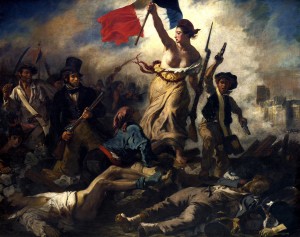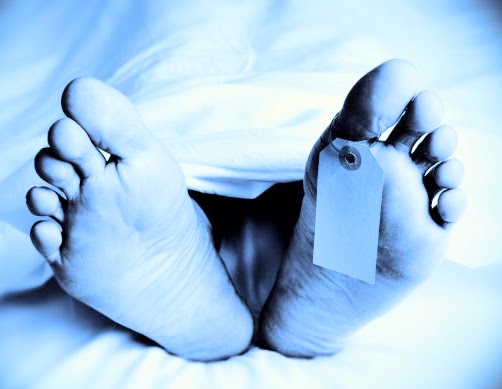 Of all Latin proverbs, the relativist adage De gustibus non disputandum est just may be the most subversive. The implication is that taste is wholly subjective, with no right or wrong anywhere in sight.
Of all Latin proverbs, the relativist adage De gustibus non disputandum est just may be the most subversive. The implication is that taste is wholly subjective, with no right or wrong anywhere in sight.
You like Bach, he likes Amy Winehouse, they like Eminem – who’s to say that one taste is better than another? Yet the very fact that this question can be posed throws the cultural door wide open to barbarism. And the now universal reply (‘Nobody’) welcomes barbarism with effusive cordiality.
So fine, there can be no arguments about taste. But there should be a strong argument about keeping tasteless barbarians away from the arts sections of our formerly respectable newspapers.
Do you remember the blessed times when we still had real art critics, men of discernment, aesthetic sense and erudition? Such men could elucidate the fine points of art, making them more readily accessible to those whose own aesthetic sense could use help, which is to say the majority.
Today’s lot do nothing of the sort. That they themselves understand nothing about art and have no taste for anything other than the most faddish of fads is obvious. But equally evident is their crusading spirit, the ideological commitment to proselytise barbarism among the masses, already primed by the oxymoron of ‘comprehensive education’.
Witness Waldemar Januszczak and the rest of the ‘Culture’ team at The Sunday Times. Today this lot have regaled us with a list of 100 works of art they cherish, those we are contextually expected to cherish as well.
The list precedes Mr Januszczak’s fawning article about Delacroix, who supposedly “put in the groundwork” of modern art. You have to understand that Mr Januszczak sees the history of art (and probably of everything else) in terms of unwavering progress, reaching its climax in modernity.
Hence precursors of modernity, such as supposedly Delacroix, enter the rarefied stratosphere of Parnassus, way out of reach for any critical judgement. However, those who possess such judgement will know that Delacroix was strictly a second-rate painter, better at talking about art than producing it.
This view was shared by, among others, Chopin, a man whose subtle aesthetic taste has been equalled by few and bettered by none. Even though Delacroix was Chopin’s close friend, the composer was rather dismissive of his paintings, including the famous portrait Delacroix painted of Chopin himself.
But what drove my systolic blood pressure up 20 points wasn’t so much the article, which is nothing but a plug for the on-going exhibition Delacroix and the Rise of Modern Art. It was the preceding list.
Among the 100 paintings ‘cherished’ by these art cretins, sorry, I meant critics, one won’t find a single work by, off the top, Giotto, Uccello, Lippi, Botticelli, Van Eyck, Memling, Bellini, Cranach, de Hooch, Zurbarán – and countless others that evidently don’t merit cherishing.
Those that do, on the other hand, include masterpieces by Tracey Emin, Jackson Pollock, Yoko Ono, Riplotti Rist (video art), Louise Bourgeois, Diego Rivera and a full brigade of impressionists, who were good enough artists but not fit even to mix paints for the giants left out.
As a sop to attendees of art appreciation courses, the list also includes works by quite a few real artists, headed – as is these days inevitable – by Caravaggio, that most soulless famous painter who appeals to modern sensibilities culminating in Tracey Emin.
His very soullessness and perverse psyche are irresistible, to say nothing of his obsessive use of chiaroscuro, which at the time was regarded as a formal innovation – another sine qua non of modern tastes. Caravaggio’s unorthodox lifestyle, including the odd bit of murder, also attracts, doubtless reminding people of today’s pop stars.
Also mentioned are works by Titian, Michelangelo, Watteau, Chardin, Rembrandt, Vermeer and some other fine artists, no doubt included for the sake of diversity and open-mindedness. I’m sure those gentlemen would be ecstatic if they came back to life and found themselves rubbing shoulders on the same list with the likes of Emin and Ono.
This commitment to a hodgepodge of indiscriminate diversity betokens a complete absence of understanding tinged with an ideological animus – I maintain that no one capable of lumping Rothko together with Duccio neither appreciates the latter nor is aware of the artistic chasm separating the two.
Such are today’s arbiters, indeed formers, of taste, or rather lack thereof. If you want to weep at the thought of how people used to write about art, I suggest you read Giorgio Vasari’s book Lives of the Most Excellent Painters, Sculptors and Architects.
And after you’ve wiped your tears, ponder the fact that barbarians are no longer at the door. They are inside the house – and they own the freehold.








Comments